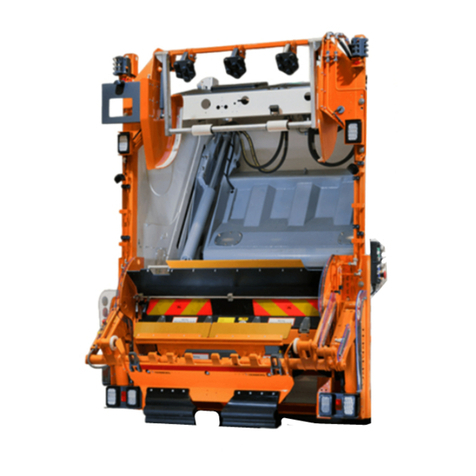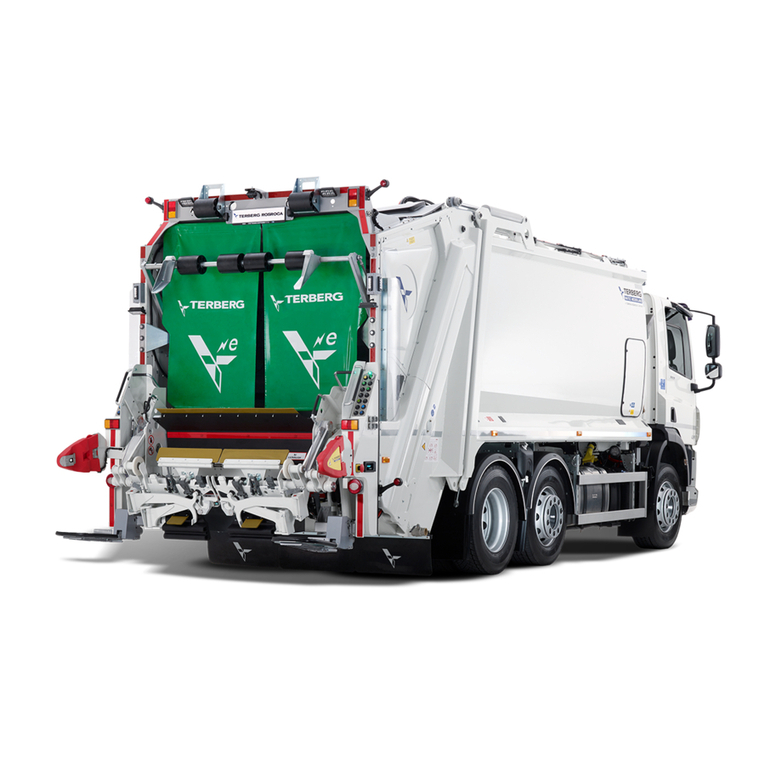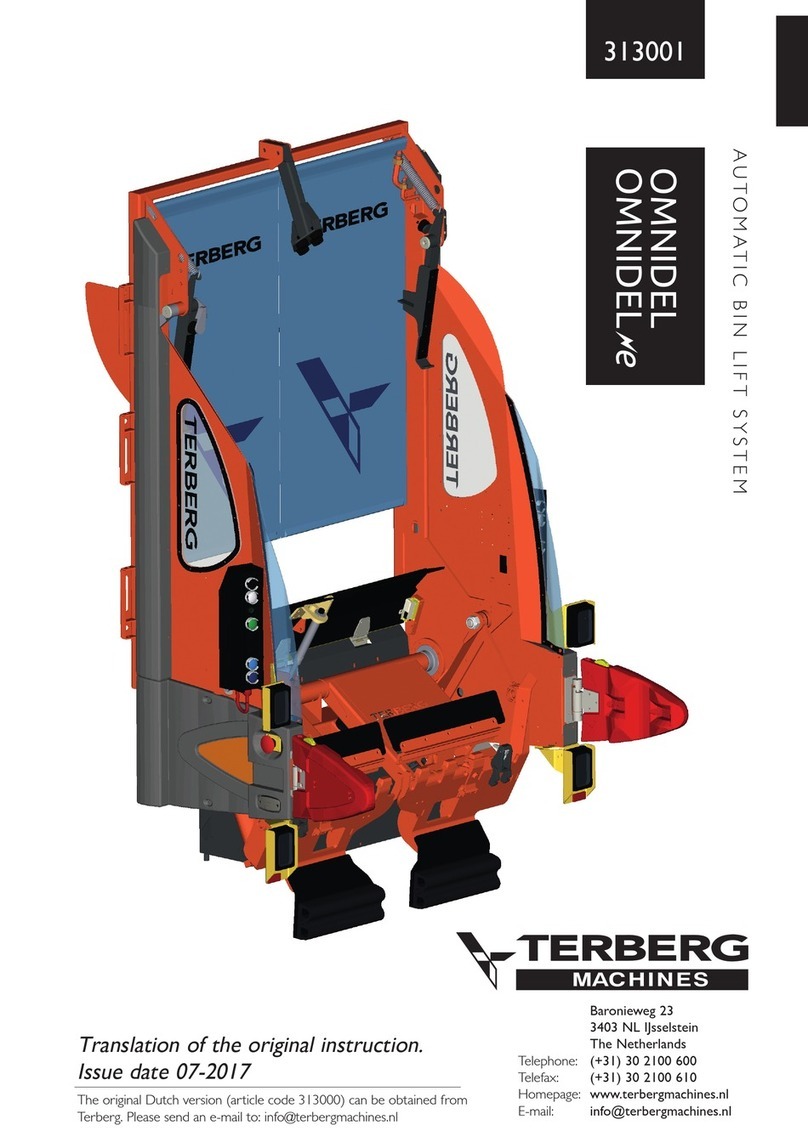
EN 7
N
37878
05-2017
2. Safety
2.2
Safety instructions applicable during operation, maintenance and repair
ãTerberg Machines .V., IJsselstein, The Netherlands
All rights reserved. No part of this book may be reproduced, stored in database or retrieval system, or published, in any form or in any way,
electronically, mechanically, by print, photoprint, microfilm or any other means without prior written permission from the publisher.
2.2.1 During operation of the bin lift system
•This bin lift has not been designed for throwing in
loose refuse. Should you decide to load loose
refuse, bags or boxes, then ALWAYS SWITCH the
AUTOMATIC function OFF. Always also do this
when removing refuse from the lifting chairs.
•Don’t go between the safety arms if the automatic
function is activated.
•Always switch the automatic function off if for any
reason you need to enter between the safety
arms.
•Make sure that there are no persons in the imme-
diate vicinity of the bin lift during the loading cycle.
•When the bin lift system is operating, under no
circumstances is it permitted to put your hand in
the bin lift system (Risk of injury).
•In the event of danger immediately press the
nearest emergency stop switch
(see chapter Safety provisions 2.4).
•Check that there are no foreign objects in or
between the bin lift system that could obstruct its
working.
•Compacting may not be carried out when there
are objects sticking out of the throw-in opening.
•Don’t use the bin lift system in situations where
there is poor visibility of the bin lift.
•Never use the bin lift system on a very uneven
surface.
•The bin lift system may not be driven up against a
bin/container or a pile of refuse.
•Take account of the heating of the hydraulic oil.
This can become 40°C warmer than the environ-
ment. As a result, the pipes and hoses can cause
light burns at high ambient temperatures.
•It is not permitted to work with bin/container
types other than those stated in the manual.
•Nothing should protrude from the bin and only
bins whose lids are fully closed should be emptied.
•Don’t empty damaged bins/containers. These can
cause problems.
•Overweight bins/containers should be removed
from the bin lift system:
max. lifting capacity 2-wheel bins: 1700N (170kg)
max. lifting capacity 4-wheel cont.: 5000N (500kg)
•Check that the bin/container is positioned cor-
rectly on the pick-up comb before emptying it.
•Let go of the bin/container as soon as it is lifted.
•It is expressly forbidden to ‘manually’ assist the
lifting cycle by hand.
•Only apply extra shaking if there is a need for this.
•Only take the bin/container away when the bin lift
has come to a standstill and the bin/container is
back on the ground.
•Place empty bins/containers where they will not
cause a danger to other road users.
•It is forbidden to empty bins/containers containing
hazardous and/or radioactive substances.
•It is forbidden to empty bins/containers containing
smouldering or burning substances.
•Never walk backwards in the direction of the bin
lift system.
•Two bin presenting and/or taking at a time by one
person should be kept to a minimum.
•A bin may only be offered to the bin lift system
when held by the handle bars.
•Always push a 2-wheel bin to the bin lift with two
outstretched arms.
•Never bend your body over the bin when offering
it to the bin lift.
•Under wintry conditions, if the bin lift is blocked
with large amounts of ice or snow deposits, the
sensors may become concealed or the bin clam-
ping mechanism may become clogged up.
Apply emergency stop switch prior to cleaning.
Clean these parts and keep as dry as possible, for
example with a broom. Never clean the bin lift
using defrosting liquids!
2.2.2 During maintenance and repair
•Maintenance and carrying out of repairs is only
permitted for qualified technical personnel.
•Any faults detected should be corrected before
the bin lift system is used.
•During maintenance and repair work switch off
the bin lift system (switch off the engine of the
refuse collection vehicle and the main power
switch).
•During repair work it must be made impossible
for unintentional switching on to occur, therefore
remove the ignition key from the ignition switch
(keep on your person).
Keep a minimum distance of 2.5 meter
between the bin lift and objects which are
located behind the bin lift system. This is to
avoid a dangerous situation in case that a
bin/container falls from the pick-up comb.






























